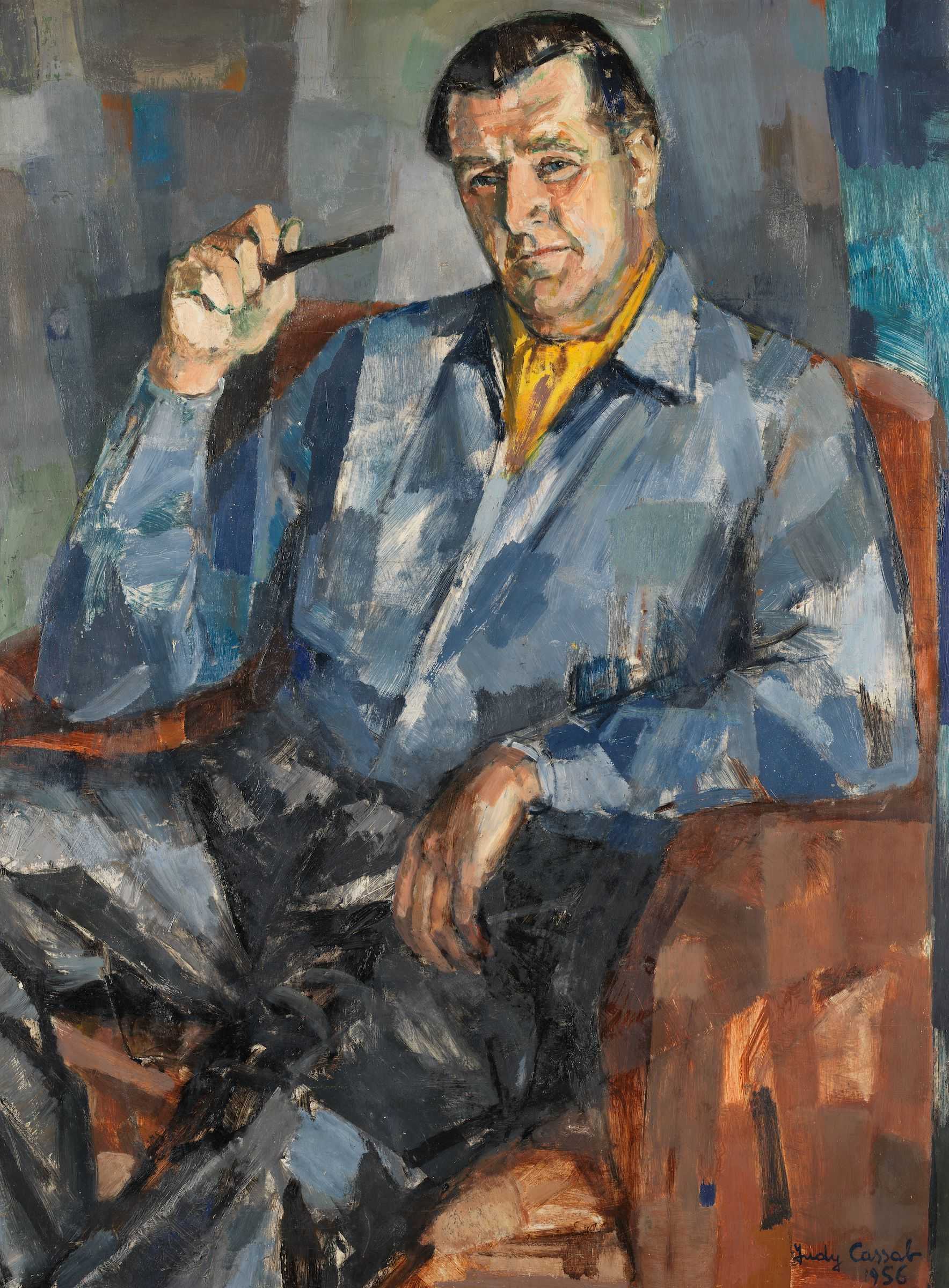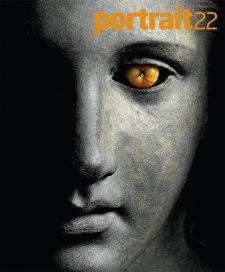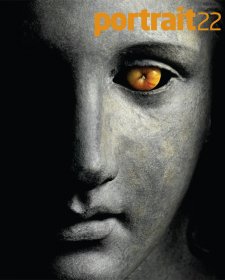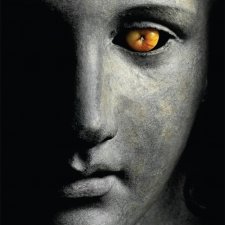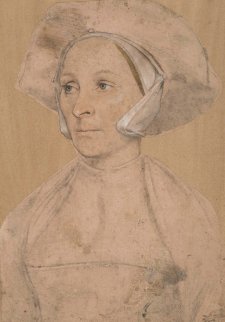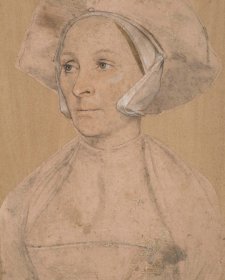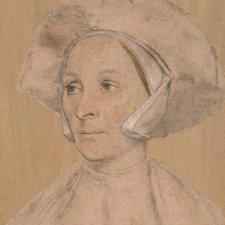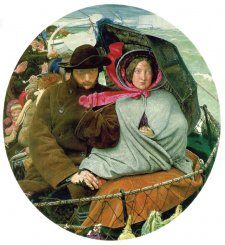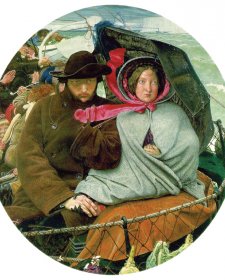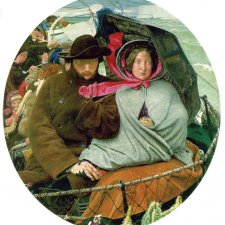On the occasion of the centenary of the birth of media magnate Sir Frank Packer KBE on 3 December, the National Portrait Gallery celebrated the handover of a portrait of Packer by one of Australia’s best-loved portraitists, Judy Cassab AO CBE.
The oil portrait, painted in 1956, is the gift of the Packer family. It was accepted by the Chair of the Board of the National Portrait Gallery, Mrs Marilyn Darling, at a small ceremony in the Gallery in December. An early work in Cassab’s Australian oeuvre, this is a vigorous, expressionistic portrait. In the view of art critic Elwyn Lynn, Judy Cassab has painted Packer as a ‘rugged, calculating and self-sufficient man whose repose seems momentary.’
Sir Douglas Frank Hewson Packer KBE (1906-1974), media proprietor, grew up in Sydney and became a cadet journalist on the Daily Guardian, owned by his father RC Packer, in 1923. Four years later he became advertising director of Smith’s Newspapers Ltd, of which his father owned a large share. In June 1933 he and EG Theodore published the first edition of the Australian Women’s Weekly - an instant success. Three years later, having inherited all his father’s media interests, he formed Consolidated Press Ltd with Theodore and became its chairman and managing director. During World War II he served on the Allied Works Council and, briefly, in New Guinea. In 1955 he established Television Corporation Ltd, which began transmitting through TCN 9 the following year.
He was knighted in 1959, two years before he acquired and revivified the Bulletin. In 1972, after he had been made KBE, he sold the Daily Telegraph and Sunday Telegraph to Rupert Murdoch. By the time he died, still mourning the loss of his papers and planning to restart his presses, his Australian Consolidated Press was the largest magazine publisher in the southern hemisphere. Upon his death his empire passed to his younger son, Kerry.
A keen sportsman from his schooldays, Packer played golf and polo, bred horses and boxed. He was an aggressive sailor, and chaired a syndicate that built Gretel and Gretel II to challenge the America’s Cup in 1962 and 1970.
Packer’s first wife, Gretel Bullmore, died in 1960. In 1964 he married the former Florence Porges in London, and they returned to live in Australia.
Although Sir Frank Packer has long been on the list of desirable subjects for the collection of the National Portrait Gallery, it was a portrait of Lady Packer that was first acquired – a photograph taken by Cecil Beaton on his Australian visit in 1968.
Lady Packer (b. 1915) was born in Paris to Edmond Porges, a major in the British Army, and his Russian wife Marie-Mathilde Brodsky. The Porges were Jewish, and several members of the extended family were enormously wealthy. Florence Porges was brought up in Paris. In 1942, during the German occupation, her family’s Paris town house, their art collections and their stocks were seized and they moved to London, where Florence worked for the Free French. In London the former Mrs Hordern used to give parties for Australian Air Force officers, and at one such gathering Florence met Wing Commander Noel Vincent. They married in 1946 and she moved to Australia with him. In 1964, she married Sir Frank Packer and they lived in Australia until he died ten years later. She returned to Monte Carlo to care for her mother, who died in 1978. Since then she has divided her time between Monte Carlo and Edgecliff.
Judy Cassab (b. 1920) is one of Australia’s most successful and prolific portrait painters. Born in Vienna, she studied in Prague and at the Budapest Academy before adopting false papers and ‘going underground’ to escape the persecution of Hungarian Jews. After the war, she and her husband reunited and came to Australia. Finding that she could not make a living through painting, she took up teaching because her husband would not let her work in a factory. She hardly spoke English and was disoriented by the strange light and seasons, but found inspiration for a more abstract style of painting than she had hitherto adopted in the landscape of the Northern Territory, to which she repeatedly returned. Gradually, she made friends with artists such as Jeffrey Smart, Stanislaus Rapotec and Desiderius Orban. In 1961 she became the first woman in twenty years to win the Archibald Prize, with a portrait of Rapotec. She won again with a portrait of friend and fellow artist, Margo Lewers, in 1968. Cassab has held a great number of solo exhibitions and has won many awards, including a literary award for her published diaries.
